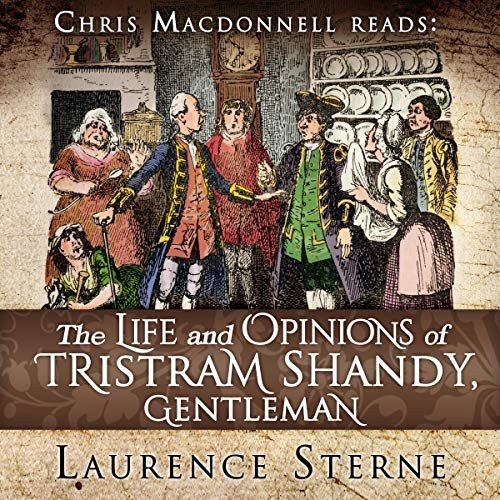
The Life and Opinions of Tristram Shandy, Gentleman is a novel written by Laurence Sterne and published in nine volumes between 1759 and 1767. It is a unique and experimental work, which defies conventional narrative structure and chronology, and instead presents a series of digressions, anecdotes, and reflections on various topics, ranging from philosophy and literature to politics and religion.
The novel follows the life of Tristram Shandy, an eccentric and often self-absorbed gentleman, from his conception to his birth and beyond. However, the plot is constantly interrupted by the narrator's tangential musings and digressions, as well as by various interruptions and accidents that befall the characters.
One of the most notable features of the novel is its use of metafictional devices, such as the narrator's constant self-reflexivity and his interactions with the reader. For example, in one memorable passage, the narrator interrupts the story to complain about a typo in the previous chapter, and proceeds to launch into a lengthy discussion of the nature of writing and the importance of accuracy.
The Life and Opinions of Tristram Shandy, Gentleman is a novel with several notable features that make it stand out from other works of its time and beyond.
Here are some of the most notable features of the novel:
-
Non-linear narrative: The novel is famously non-linear, with the events of Tristram's life unfolding in a non-chronological order. The story is often interrupted by digressions, anecdotes, and philosophical musings, which can occur at any point in the narrative.
-
Self-reflexivity: The narrator of the novel is highly self-aware and often addresses the reader directly, commenting on the act of writing and the nature of storytelling. This self-reflexivity contributes to the novel's playfulness and wit.
-
Humor: The novel is renowned for its humor, which is often bawdy and irreverent. The humor can be found in the characters' eccentricities and obsessions, as well as in the narrator's digressions and asides.
-
Metafictional devices: The novel makes use of metafictional devices, such as the narrator's constant self-reflexivity and his interactions with the reader. This blurs the boundaries between fiction and reality, and encourages the reader to reflect on the act of reading and the nature of literature.
-
Characterization: The novel features a diverse cast of characters, each with their own quirks and idiosyncrasies. The characters are often developed through their interactions with other characters, rather than through traditional exposition.
-
Experimental structure: The novel's structure is highly experimental, with chapters that vary in length and content, and frequent interruptions and digressions. This structure challenges traditional notions of narrative and encourages the reader to approach the novel in a new way.
Overall, The Life and Opinions of Tristram Shandy, Gentleman is a highly original and innovative work, which continues to fascinate and inspire readers to this day. Its unique combination of humor, experimentation, and philosophical depth has made it a classic of English literature and an enduring influence on subsequent writers.
Another distinctive aspect of the novel is its playful and irreverent tone, which often borders on the absurd. For example, one of the most famous scenes in the novel involves Tristram's uncle Toby's obsession with military fortifications, which leads him to construct a model of a fort in his garden and to reenact various battles with his servant, Corporal Trim. The humor in this scene comes not only from the absurdity of the situation, but also from the characters' earnestness and sincerity.
Despite its unconventional structure and style, The Life and Opinions of Tristram Shandy, Gentleman was a commercial and critical success in its time, and remains a classic of English literature. It has been praised for its originality, wit, and philosophical depth, as well as for its influence on later writers such as James Joyce and Virginia Woolf.
One of the novel's most enduring legacies is its contribution to the development of the modernist novel, with its emphasis on subjective experience, fragmentation, and non-linear narrative. It also anticipates many of the concerns of postmodernism, such as the blurring of boundaries between fiction and reality, and the self-consciousness of the text.
Overall, The Life and Opinions of Tristram Shandy, Gentleman is a fascinating and entertaining work that rewards readers who are willing to embrace its unconventional structure and style. It is a testament to the power of literature to challenge our assumptions and expand our horizons, and a reminder that even the most experimental and seemingly chaotic works can have a profound impact on the way we think and write.








